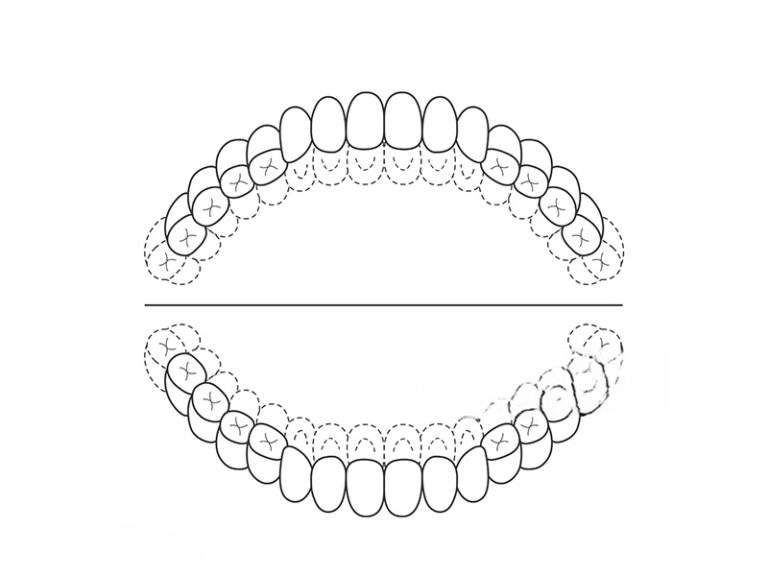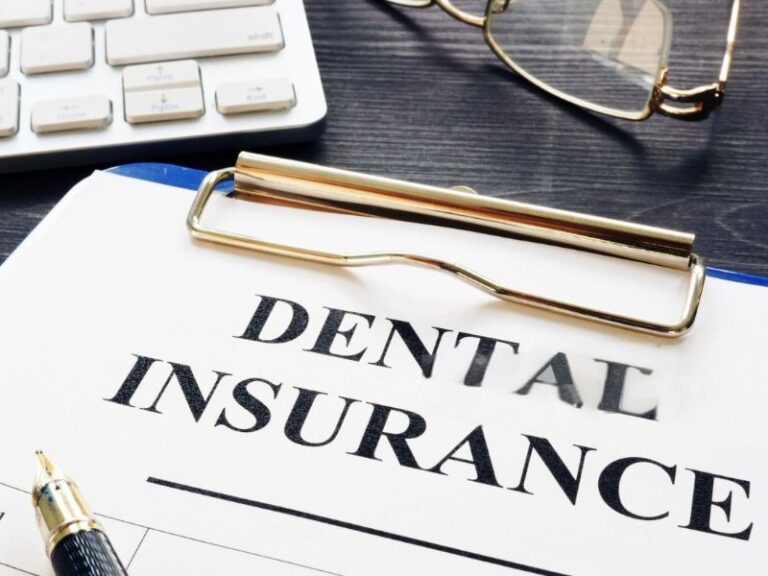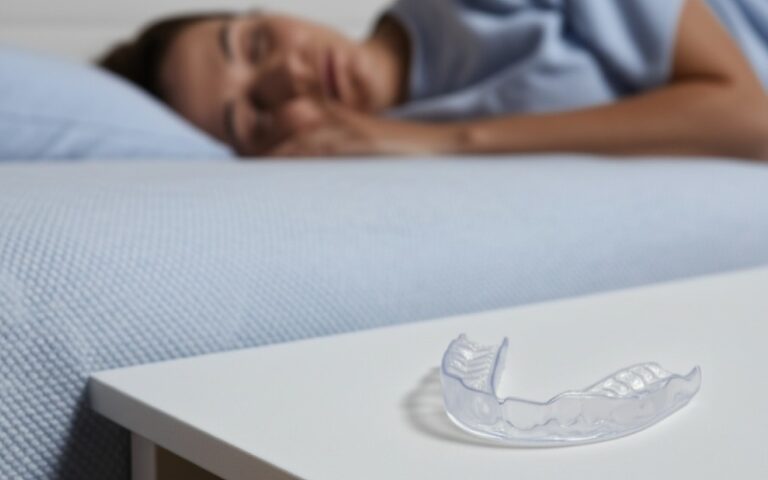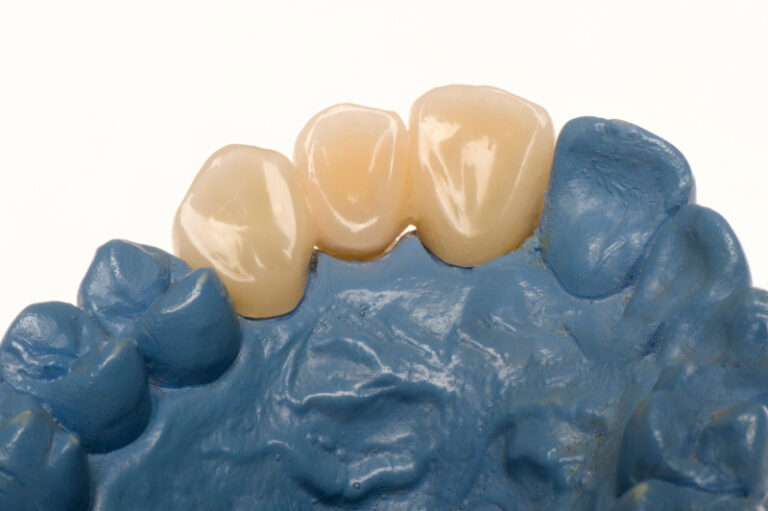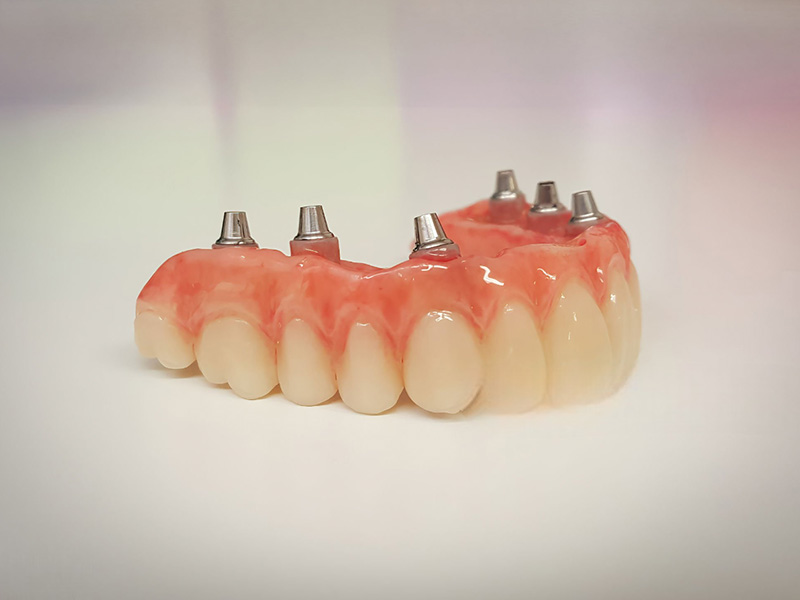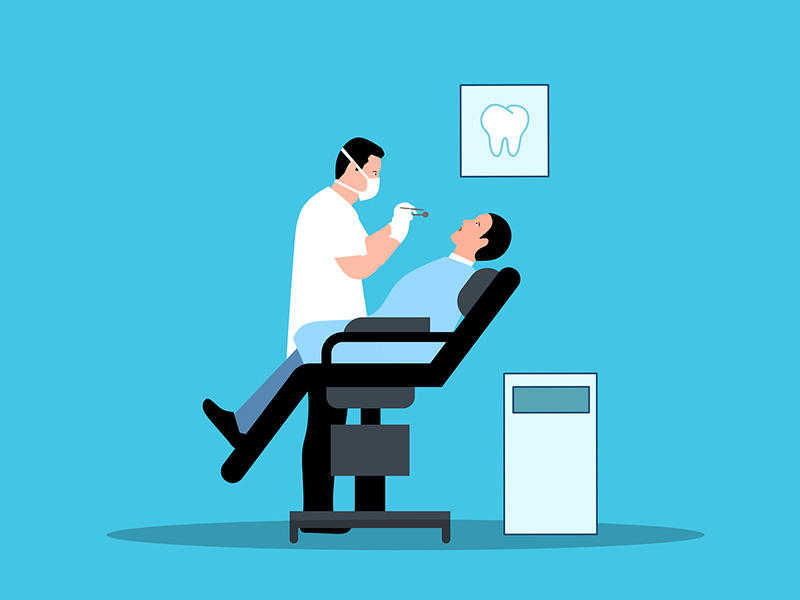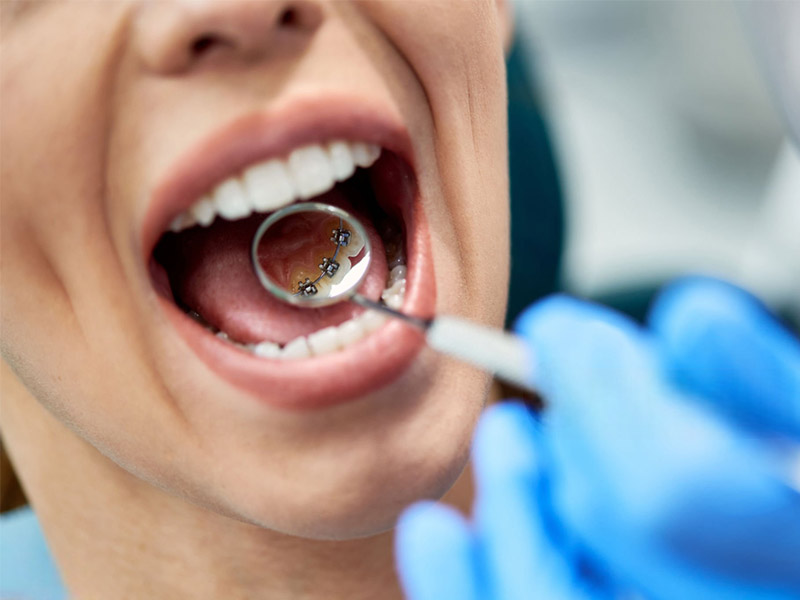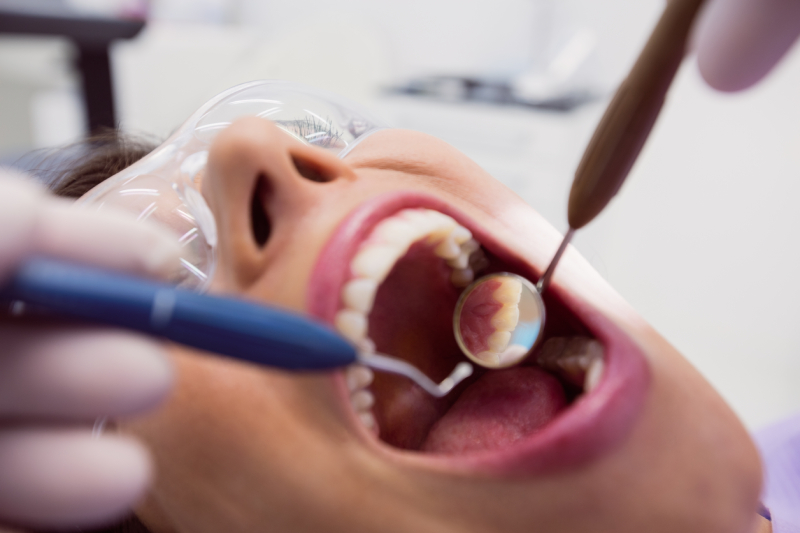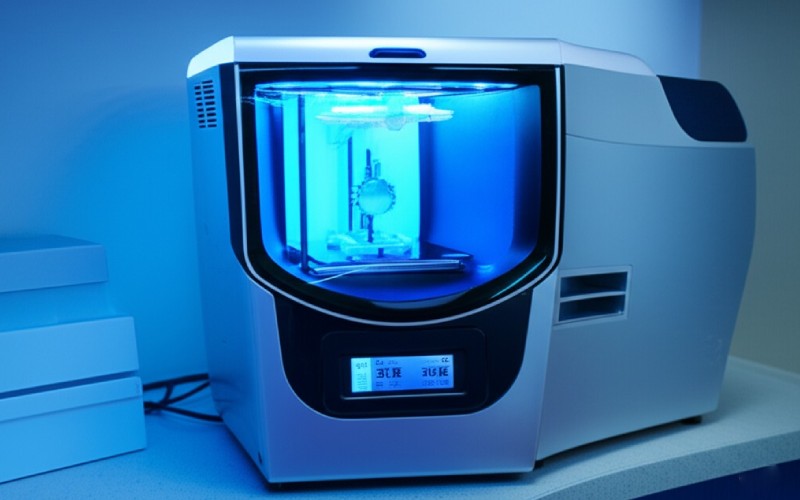
Dental 3D Printer Price: Your Simple Guide to a Smart Investment
So, you’re thinking about getting a 3D printer for your dental office or lab? That’s a huge step. You’ve probably heard the buzz and seen how this tech is changing the game from making super-accurate surgical guides to creating same-day crowns. But with all that excitement, a big, practical question always pops up: “What’s this actually going to set me back?”
And you’re right to ask. The price tag on a dental 3D printer isn’t just one number. It’s an investment in your business’s future. Figuring out all the costs—from buying the machine to paying for supplies—can feel like trying to solve a puzzle. You see prices from a few thousand bucks to what a new car costs and it’s hard to know what you really need.
That’s why we made this guide. We want to clear up the confusion around the dental 3D printer price and give you an honest look at the total cost. We’ll break down what makes prices go up or down, look at the different price levels and most importantly, help you see the return on investment (ROI) that makes this a game-changer for so many people. Think of this as your roadmap to making a smart decision for your practice.
Table of Contents
What Makes Dental 3D Printer Prices Change? The Key Things Explained
When you start looking around you’ll see that not all dental 3D printers are the same. The price can swing wildly based on a few key things. If you understand these you’ll see why one machine costs more than another and which features are actually worth paying for.
Technology (SLA, DLP, & LCD): The Engine Under the Hood
The technology inside is the biggest reason for price differences. It’s like a car engine—they all make the car move but how they do it changes how well they work and how much they cost.
- SLA (Stereolithography): This is the original resin printing tech. It uses a super-fine laser to draw and harden each layer of the print. The
SLA dental printer pricecan be higher and it’s often slower because that laser has to trace every little detail. - DLP (Digital Light Processing): Instead of a laser, DLP uses a projector to flash a whole layer at once. This makes it way faster than SLA especially if you’re printing bigger parts or a bunch of things together. The
DLP dental printer priceis usually in that professional mid-range. It gives you a great mix of speed and accuracy for clinics and labs. Brands like SprintRay and EnvisionTEC (Etec) are big names here. - LCD (Liquid Crystal Display): This tech uses UV lights that shine through an LCD screen. The screen acts like a stencil to make the shape of the layer. It’s a simpler take on DLP. The
LCD dental printer costis usually lower so it’s a popular choice forentry-level dental 3D printermodels from brands like Phrozen or Anycubic. They’re a great value but the LCD screens wear out and you’ll need to replace them over time.
Build Size & Speed: How Much You Can Print and How Fast
How much can you print at once and how quickly can you do it? The build volume dental 3D printer price is tied right to its size. A bigger build plate means you can print a whole arch model, several surgical guides or a batch of custom trays in one go. This seriously boosts your dental laboratory efficiency 3D printing. In the same way the speed dental 3D printer cost is a premium feature. Super-fast printers from brands like Nexa3D or Carbon can make parts in minutes not hours. That’s a huge deal for busy labs or for doing same-day dentistry.
Accuracy & Resolution: What Really Matters for Patients
In dentistry, being precise is everything. You can’t use a surgical guide that’s off by a millimeter or a crown that doesn’t fit just right.
- Resolution is the tiniest detail the printer can make (measured in microns).
- Accuracy is how well the final printed part matches your digital file. The
accuracy dental 3D printer costis a huge deal. Professional printers from Formlabs, Asiga, and Stratasys have been tested and approved for clinical work. This ensures their parts are reliable enough to be used on a patient. Cheaper, hobby-level printers might have good specs on paper but they often don’t have the proven accuracy you need forbiocompatible materialsand things that go in a patient’s mouth.
Brand & Reputation: The Value of a Name You Can Trust
Well-known brands in dentistry like Formlabs, SprintRay, 3D Systems, and EnvisionTEC cost more for a good reason. You’re not just buying a machine you’re buying into their whole system. This includes:
- Reliability: They have years of research and proven results in real clinics.
- Tested Workflows: They give you a complete system that’s been tested from software to materials to the final touches.
- Official Clearance: Their printers and materials often have FDA approval or CE marking for specific uses.
Cool Features & Automation: Making Your Life Easier
The more expensive systems have features that make the whole process easier. This might be automatic resin refills, built-in washing station and post-curing unit systems or software that’s easier to use. These features add to the professional dental 3D printer cost but they also cut down on work, reduce mistakes and make the dental 3D printing workflow cost lower in the long run.
Warranty & Support: Your Safety Net
What do you do when something breaks? A cheap printer might leave you high and dry. A professional system’s price includes a solid warranty and access to technical support. This help is priceless when you’re troubleshooting or setting things up and it makes sure you don’t lose money from downtime. It’s a vital part of your digital dentistry investment.
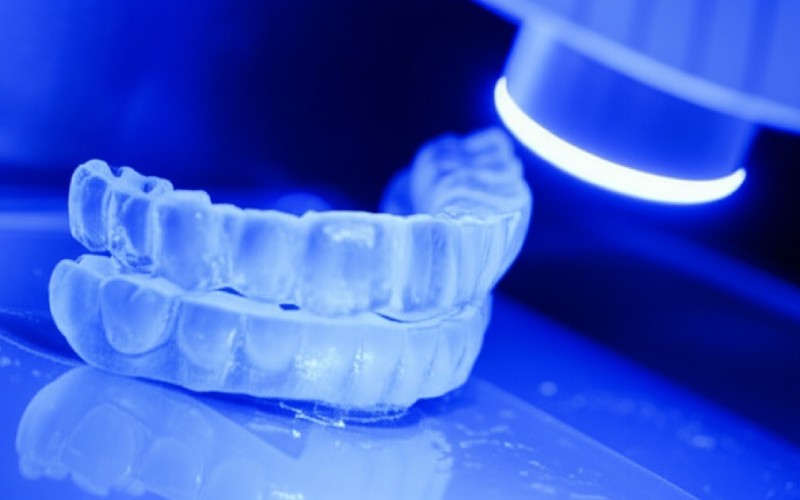
Dental 3D Printer Price Tiers: From Starter to Pro
Okay, let’s talk numbers. We can put dental 3D printers into three main buckets. Finding the right one for you is all about your goals, your printing volume and your budget.
Entry-Level/Desktop Printers: Dipping Your Toes In
- Typical Price Range: $1,000 – $5,000
- Who it’s for: Small clinics, dentists who want to learn or offices that only need to print basic
dental models. - Examples: Phrozen, Anycubic, Elegoo (some models can be used for dental work).
These are your affordable dental 3D printers. They are a great way to get a feel for the technology without a huge digital dentistry investment. You can easily print models for diagnosis, custom impression trays and maybe even some simple splints. But they have their limits. The accuracy dental 3D printer cost is lower because they aren’t strictly tested for clinical things like surgical guides or temporary crowns. The process is also more hands-on and you’ll have to figure out your own setup for washing and curing.
Mid-Range/Professional Desktop Printers: The Workhorse of Modern Dentistry
- Typical Price Range: $5,000 – $25,000
- Who it’s for: General dental offices, orthodontists and small to medium-sized labs.
- Examples: Formlabs Form 3B+, SprintRay Pro 95 S, Asiga MAX.
This is the sweet spot for most dental pros. These printers, often from trusted dental 3D printer supplier brands, give you the perfect mix of price, quality and ease of use. The cost of dental 3D printer in this range gets you high accuracy, lots of FDA-approved biocompatible dental resin choices and often a complete system. You can confidently make:
- Very accurate
surgical guides - Models for clear
aligners - Temporary
crown and bridgework Denturebases and teeth- Nightguards and splints
The in-house dental 3D printing cost starts to look really good at this level because you can replace big lab bills with a predictable and efficient process right in your office.
High-End/Industrial Printers: The Production Powerhouse
- Typical Price Range: $25,000 – $100,000+
- Who it’s for: Large dental labs, production centers and specialty clinics.
- Examples: EnvisionTEC/Etec D4K, Carbon M-series, Stratasys J-series.
This is the top shelf of dental additive manufacturing. The high-end dental 3D printer cost is big but so are its abilities. These machines are built to print a ton of stuff with amazing speed and rock-solid reliability. A large format dental 3D printer in this group can make dozens of models at once. They often have advanced automation, like robot arms that take out finished prints and start new ones. For a big ortho lab that needs to print hundreds of aligner models a day, the cost of dental aligner 3D printer at this level is an easy choice because of the sheer volume and cost-effective dental production.
Dental 3D Printer Investment & ROI Data
To give you a clearer picture, here’s a breakdown of the costs and things to think about across these tiers.
| Category / Factor | Description | Estimated Price Range (USD) | Key Features & Considerations | Average ROI Period (Estimated) |
|---|---|---|---|---|
| Entry-Level Desktop | Good for basic models, low volume, and learning. (e.g., Phrozen Sonic Mini, Anycubic Photon Mono) | $1,000 – $5,000 | • Basic accuracy • Small build volume • Limited material choices • Manual post-processing | 12-24 months (for basic model printing) |
| Professional Desktop | Perfect for general dental offices & mid-sized labs. (e.g., Formlabs Form 3B+, SprintRay Pro 95/S) | $5,000 – $25,000 | • High accuracy (25-50 microns) • Medium build volume • Wide range of biocompatible resins • Often comes with wash/cure stations | 6-18 months (due to saved time & new services) |
| High-End / Industrial | For large dental labs and high-volume work. (e.g., EnvisionTEC/Etec D4K, Carbon M2) | $25,000 – $100,000+ | • Top-tier speed & accuracy • Large build volume • Advanced automation • Built like a tank | 3-12 months (for huge volume & special jobs) |
| Extra Equipment | (Washing & Curing Stations) You need these for proper cleaning and to make materials safe. | $500 – $5,000+ | • Automatic cleaning • UV light curing • Matched to your printer brand | Included in overall printer ROI |
| Dental Resin Costs | Price per liter/kg for different jobs (e.g., model, surgical guide, splint) | $150 – $400 per liter/kg | • Biocompatibility (ISO 10993) • Print quality • Strength | Directly affects the cost of each print |
| Software Costs | CAD/CAM software to design things and slicing software to print them. | $0 – $500/month (subscription) or $500 – $10,000+ (one-time) | • Design tools • Smooth workflow • Works with your scanner/printer | Makes your workflow fast |
| Maintenance/Parts | Parts that wear out (resin tanks, build platforms) & check-ups. | $200 – $1,000+ per year | • Keeps the printer running well • Prevents expensive downtime | Avoids losing money from a broken printer |
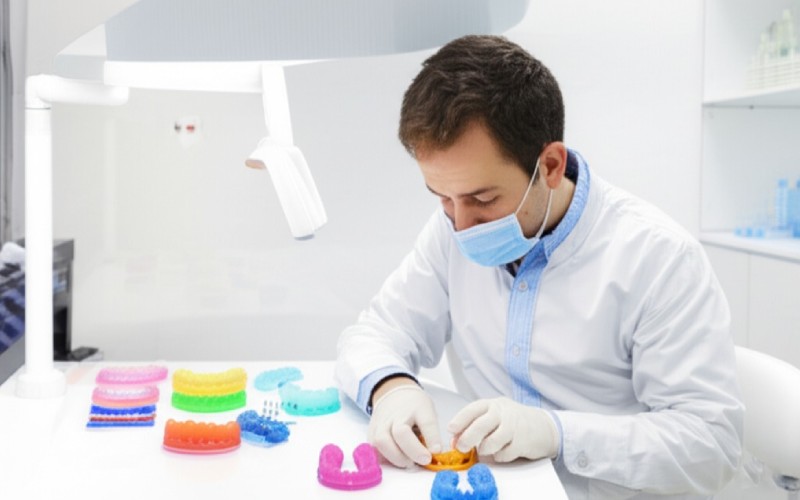
More Than Just the Printer: Hidden and Ongoing Costs
The sticker price is just the start. To make a real dental 3D printer budget, you have to think about the costs to run it. Forgetting these is like buying a car and not thinking about gas or insurance.
- Resin/Material Costs: This will be your biggest regular expense. The
dental resin pricescan be very different depending on what you’re making. A simple model resin might be $150/liter but a specialbiocompatible dental resin costfor long-term splints could be $400/liter or more. Figuring out yourcost per dental printis the key to knowing if you’re making money. - Post-Processing Gear: Printing is just step one. You absolutely have to wash and cure parts correctly to get the right strength and make them safe for patients. The
washing station dental 3D printing priceand thecuring station for dental 3D printer costcan add another $500 to $5,000+ to your initialdental 3D printer setup cost. - Software & Licenses: Many printers come with basic software but you’ll need
Dental CAD softwareto design your parts. This could be a one-time fee or more likely a monthly or yearly subscription that can cost thousands per year. - Maintenance & Parts: Printers have parts that wear out. Resin tanks get cloudy, build platforms get scratched and filters need to be changed. It’s smart to plan for a few hundred to a thousand dollars a year for
dental 3D printer maintenance costto avoid surprise bills and downtime. - Training & Learning: Don’t forget about the learning curve. The
training cost for dental 3D printingisn’t just learning to press “print.” It’s about understanding the wholedigital workflow in dentistry, from scanning and designing to the best ways to finish your prints. Good training makes sure you get the most out of your investment.
Is It Worth It? The Return on Investment (ROI) for Dental 3D Printers
Okay, we’ve talked a lot about costs. Now for the exciting part: how you save money and make new money. The ROI dental 3D printer is where this investment really pays off and it often happens faster than you think.
Saving Money on Lab Bills: The Easiest Win to See
Just think about your monthly lab bill. How much are you paying for models, surgical guides and custom trays? Now imagine cutting that bill by 70-90%. That’s what printing in your own office can do.
Let’s use an example from our table. A cost of dental implant guide printer could be part of a $15,000 professional setup. If you send out for a surgical guide it might cost you $150. Printing that same guide in your office might cost about $10 in resin. After just 100 guides, you’ve pretty much paid for the printer just in lab savings! This quick dental fabrication cost savings is why so many dentists are switching.
Making More Money: Adding New Services
A dental 3D printer doesn’t just save you money; it helps you make more money. It lets you offer services you couldn’t before which boosts dental practice profitability with 3D printing.
- Same-Day Dentistry: You can offer same-day surgical guides or temporary crowns. That’s a premium service patients will pay more for.
- In-House Clear Aligners: It’s a big project but some practices are making their own aligners. This can be a huge new source of income. The
orthodontic 3D printer costis paid back very quickly. - Work Faster: Quicker turnarounds mean you can see more patients and finish more cases. A digital workflow frees up your time and your staff’s time.
Picking the Right Dental 3D Printer for Your Office and Budget
Ready to pick one? Here’s a simple dental 3D printer purchase guide to help you decide.
- Figure Out Your Needs: What do you really want to print? If it’s just models an
entry-level dental 3D printeris fine. If you want to make surgical guides and splints you need to invest in a professional system that has been tested and approved. Be honest about how much you’ll print now and in the future. - Make a Real Budget: Look at more than just the printer’s price. Add up the total
in-house dental 3D printing cost, including materials, software and maintenance for the first year. - Do Your Homework: Don’t just look at a
price comparison dental 3D printerschart. Read reviews. Ask for sample prints. See which system (like Formlabs or SprintRay) feels right for you. - Put Support First: A printer is only as good as the company behind it. A cheap printer with no support can turn into a very expensive paperweight fast.
- Look into Financing: Don’t let the upfront cost stop you. Most suppliers offer
dental 3D printer financing optionsor leasing deals that can make the investment easier to handle. Check intotax benefits dental 3D printerownership might get you, like writing off the cost over time.
Real-Life Examples & Success Stories
Let’s make this real.
Case Study 1: The General Practice Dr. Smith’s clinic bought a mid-range SprintRay DLP system. Their main goal was to stop paying a lab for surgical guides and to print their own models. They cut their lab bill for these items by over 70%. The surprise win? They could now offer patients a faster, smoother implant process so more patients said yes to the treatment and were happier. They calculated they made all their money back in just 10 months.
Case Study 2: The Orthodontic Lab An ortho lab was having trouble keeping up with orders for clear aligner models. They invested in several high-speed Asiga printers. This dental laboratory automation allowed them to go from making a few hundred models a week to thousands. The cost per dental print dropped like a rock and they could take on new dentist clients, growing their business like crazy. Their investment paid for itself in less than six months.
Conclusion: Making a Smart Investment in Digital Dentistry
The dental 3D printer price is more than a number—it’s a big choice for your practice. It’s about looking at the upfront and ongoing costs and weighing them against the huge potential to save money, work smarter and grow.
By looking past the simple price tag to the whole cost-benefit dental 3D printing picture, you can see the clear path to a great return on your investment. Whether you start small with an affordable printer to learn the ropes or jump right into a professional workhorse, you’re not just buying a piece of dental technology. You’re investing in a future where your practice makes more money, runs better and takes even better care of your patients. The future of dental 3D printing cost will only get better but the advantages of getting in now are already here.

